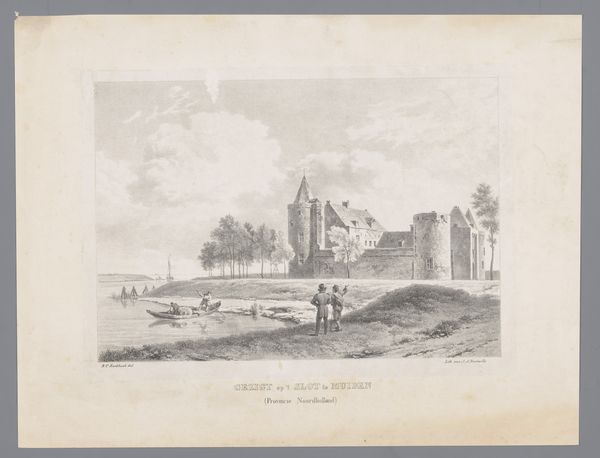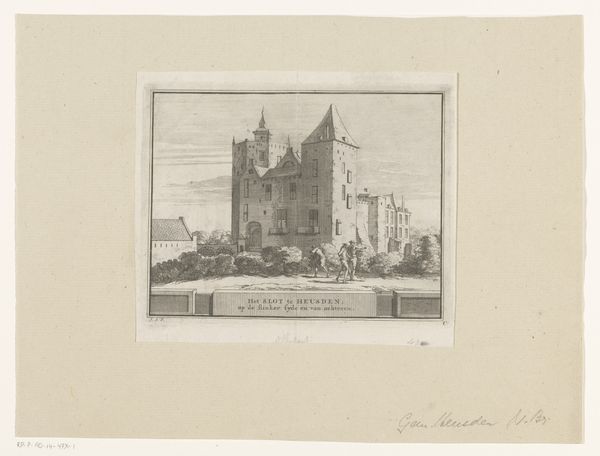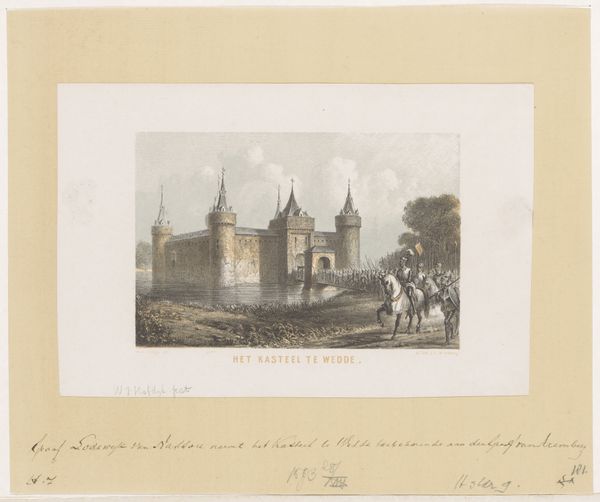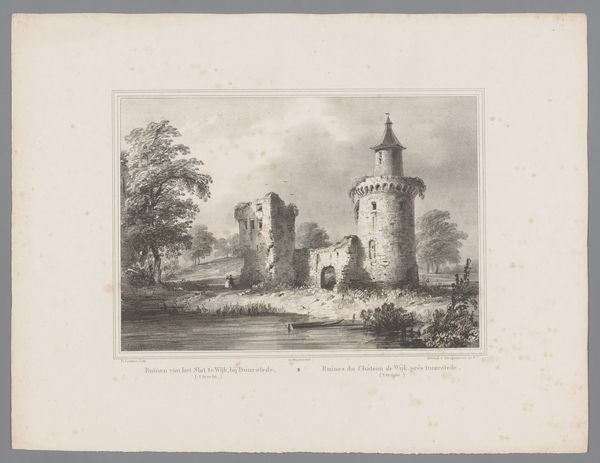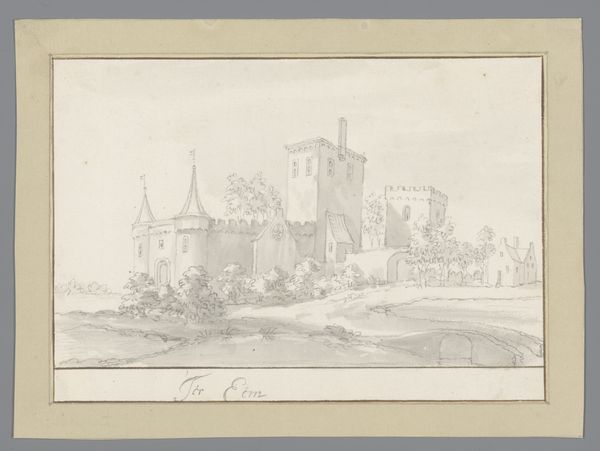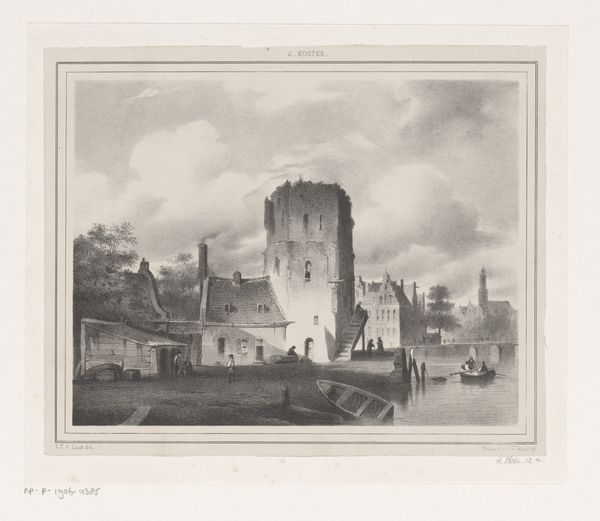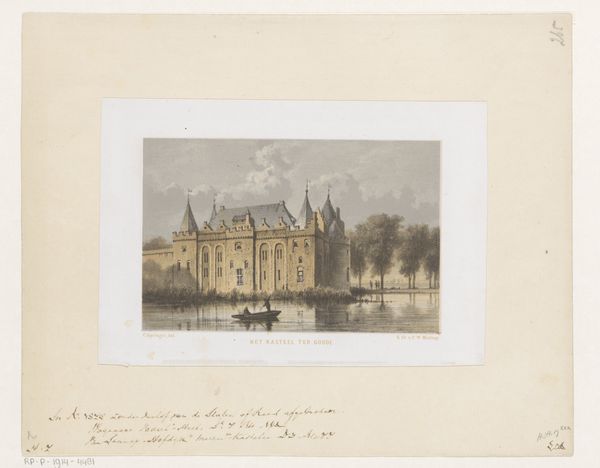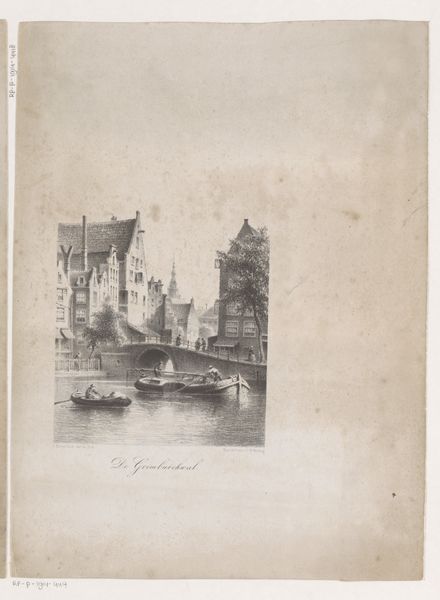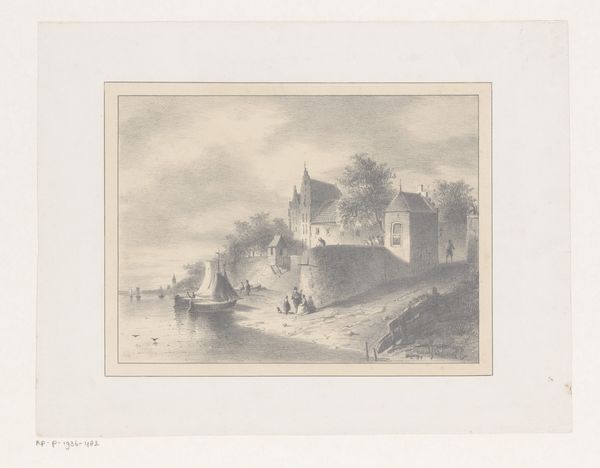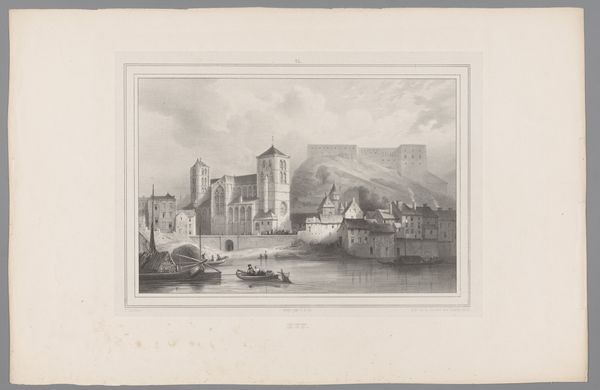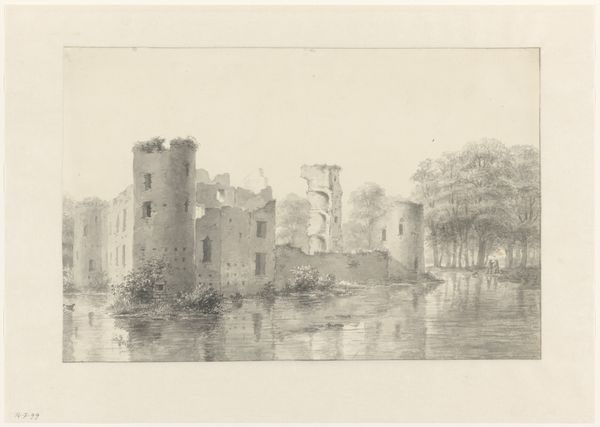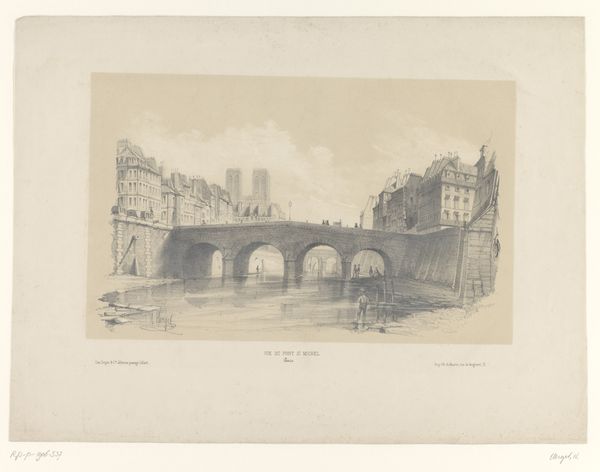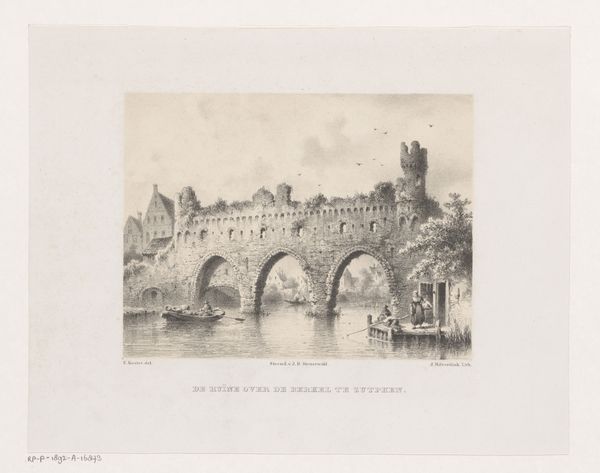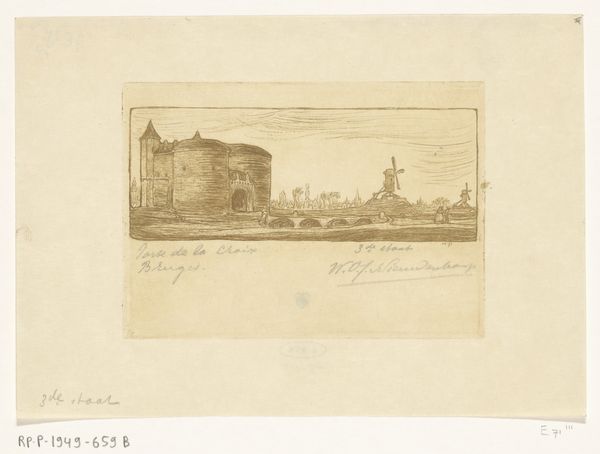
Dimensions: height 174 mm, width 258 mm, height 267 mm, width 327 mm
Copyright: Rijks Museum: Open Domain
Curator: This is Cornelis Springer’s "Kasteel van Medemblik," dating from 1847 to 1865, held here at the Rijksmuseum. A rather typical Romantic cityscape rendered in watercolor and print, wouldn’t you say? Editor: Yes, at first glance it’s very muted in palette, quite desaturated. But the closer I look, the more I appreciate the layering of textures, the delicate way the watercolour defines the stone of the castle. Curator: Springer's cityscapes, as historical documents, often idealize the urban environment. Notice the tranquility – a carefully constructed image intended to evoke a specific sentiment. The printing process also allowed for wider distribution. Editor: It's interesting to think about how that mass production impacts the consumption of these images. Prints like this bring the picturesque and historic to a wider audience, transforming how people see their world. I am also noticing the artist using light and water almost like another layer of material itself, playing up certain architectural textures and softening others. Curator: Absolutely. Consider Medemblik’s history, a site of strategic importance. Springer presents the castle not merely as architecture but as a symbol. And look how history serves as a backdrop for broader social commentary on Dutch identity at the time. Editor: And yet, that subtle watercolor washes down the monumentality, perhaps commenting on the transient nature of power even as it seeks to capture its solidity through very accessible means. Curator: Indeed, the tension between historical record and romanticized vision is key. These images became intertwined with the narratives being constructed about Dutch history and national identity during that period. Editor: An interesting interplay between nationalistic aspirations and the labor and the materiality involved in creating the print itself. Curator: The beauty lies in its ability to remind us of how the art world helps us to preserve our culture. Editor: Agreed. I’ll now always appreciate the skill that goes into its materiality and what role it served.
Comments
No comments
Be the first to comment and join the conversation on the ultimate creative platform.
